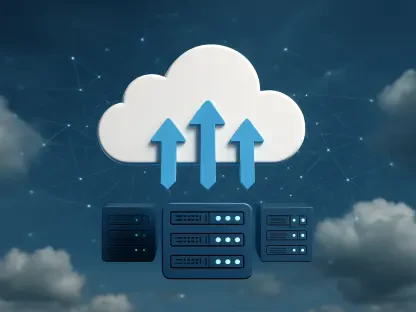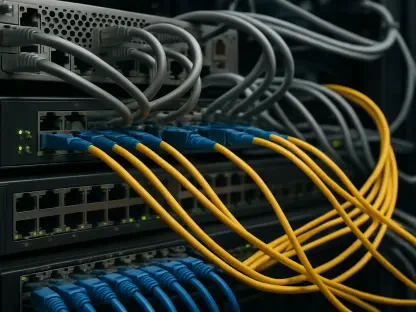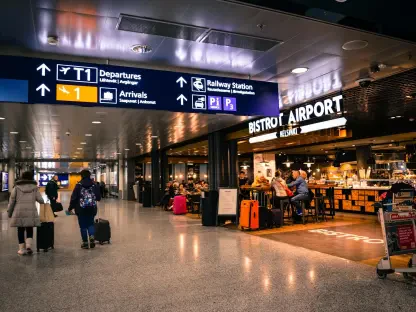As the technology behemoth Google undergoes a substantial transformation, its work towards the comprehensive automation of its sprawling 2 million-mile fiber network nears fruition. By aiming for Level 5 autonomous operation by the end of the year, Google sets the stage to revolutionize network management. The ambitious pursuit is led by Muninder Sambi, the Vice President and General Manager for Network and Security at Google Cloud, who highlights their endeavor to retrofit the entire physical infrastructure. This includes ramping up capabilities like exponential scalability, heightened reliability, and integrating Protective Re-Route (PRR) technology. The complete shift to a self-sustaining network, managed by artificial intelligence, marks a significant milestone in the field of network autonomy.
The Challenges of Achieving Level 5 Autonomy
The Significance of Level 5 on TM Forum’s Autonomous Networks Maturity Scale
Level 5 autonomy signifies a state where network operations are entirely autonomous, marked by minimal human intervention. While many telecom operators strive to reach Level 4 autonomy as a benchmark, Google challenges the status quo by aiming for Level 5. Achieving this entails transitioning from basic automated processes to fully AI-commanded network management. Google’s network will be entirely programmable, with AI agents managing everything from capacity planning to ensuring network redundancy, signaling a profound shift in network management paradigms.
The transition involves addressing numerous challenges, primarily ensuring that the AI can autonomously handle issues without affecting user experience. When an issue arises, the AI isolates and switches the affected network slice efficiently, highlighting the need for reliable redundancy mechanisms. Furthermore, the diversification of vendors is a crucial strategy to prevent disruptions caused by dependence on any single supplier. By reducing vendor dependency, Google aims to maintain uninterrupted network service even if issues occur with one supplier.
The Advanced Capabilities of Google’s Network Infrastructure
Google’s effort to achieve full network autonomy encompasses upgrading the technical capabilities of its vast infrastructure. Protective Re-Route technology exemplifies this effort, created to replace traditional Multiprotocol Label Switching (MPLS) and segment routing to meet the evolving demands driven by artificial intelligence applications. This technological upgrade ensures that the network remains resilient and adaptable to the increasing data load and evolving user requirements.
The integration of a digital twin of the network represents another advanced feature in this transformation. The digital twin serves as a real-time virtual replica, allowing the AI to simulate scenarios and resolve potential issues proactively without impacting actual network operations. This dynamic monitoring and problem-solving capability ensure that the network remains highly reliable and efficient. The strategic foresight in these infrastructural upgrades reaffirms Google’s commitment to staying ahead in the technology curve.
The Wider Impact of Autonomous Networks
Pioneering Move Setting Industry Benchmarks
Google’s initiative to fully automate its network is poised to set new benchmarks in the realm of cloud and telecom industries. By aiming for complete AI-driven operations without manual intervention, Google not only showcases its commitment to innovation but also positions itself as a leader in this domain. Other network operators are closely monitoring this transition, recognizing the potential transformational impact on the industry. Achieving full network autonomy could lead to best practices that others might adopt, driving widespread improvements across various sectors.
The move highlights Google’s ambition and the strategic foresight in pursuing avant-garde network technologies. By consistently pushing the boundaries and setting bold targets, Google redefines expectations, influencing the direction of future technological advancements. This endeavor underscores the substantial impact full network autonomy can have, spanning increased operational efficiency, reduced human error, and higher resilience to challenges.
Addressing Concerns and Future Prospects
While Google’s vision of a fully autonomous network promises significant advances, it also raises several concerns and considerations. The reliance on AI-driven operations necessitates robust safeguards to protect against potential AI failures or cyber threats. Ensuring that AI mechanisms are foolproof and constantly updated to counter emerging threats will be paramount. Furthermore, ethical considerations regarding AI decision-making processes and transparency in operations must feature in this broader conversation.
Looking forward, the successful realization of Google’s objectives could pave the way for similar advancements across different networks globally. By showcasing the viability and benefits of a fully autonomous system, Google could inspire a new wave of innovation in both public and private sectors, driving a technological evolution that merges AI capabilities with traditional network infrastructures. It emphasizes the importance of continuous efforts in research, development, and collaboration among industry players to harness the potential of network autonomy fully.
Conclusion
Level 5 autonomy represents a state where network operations run entirely on their own, with minimal human input. While many telecom providers aim to reach Level 4 autonomy as a goal, Google is pushing boundaries by striving for Level 5. This involves moving from basic automated processes to a fully AI-driven network management system. Google’s network will be completely programmable, with AI agents overseeing everything from capacity planning to ensuring network redundancy, marking a significant evolution in network management practices.
Reaching this level requires overcoming various challenges, especially ensuring that AI can handle issues autonomously without impacting user experience. When a problem occurs, the AI will isolate and switch the affected network slice quickly, underscoring the need for efficient redundancy mechanisms. Additionally, diversifying vendors is a key tactic to avoid disruptions from relying too heavily on one supplier. By minimizing vendor dependency, Google aspires to provide continuous network service even if there are issues with certain suppliers, ensuring reliable and seamless operations.









